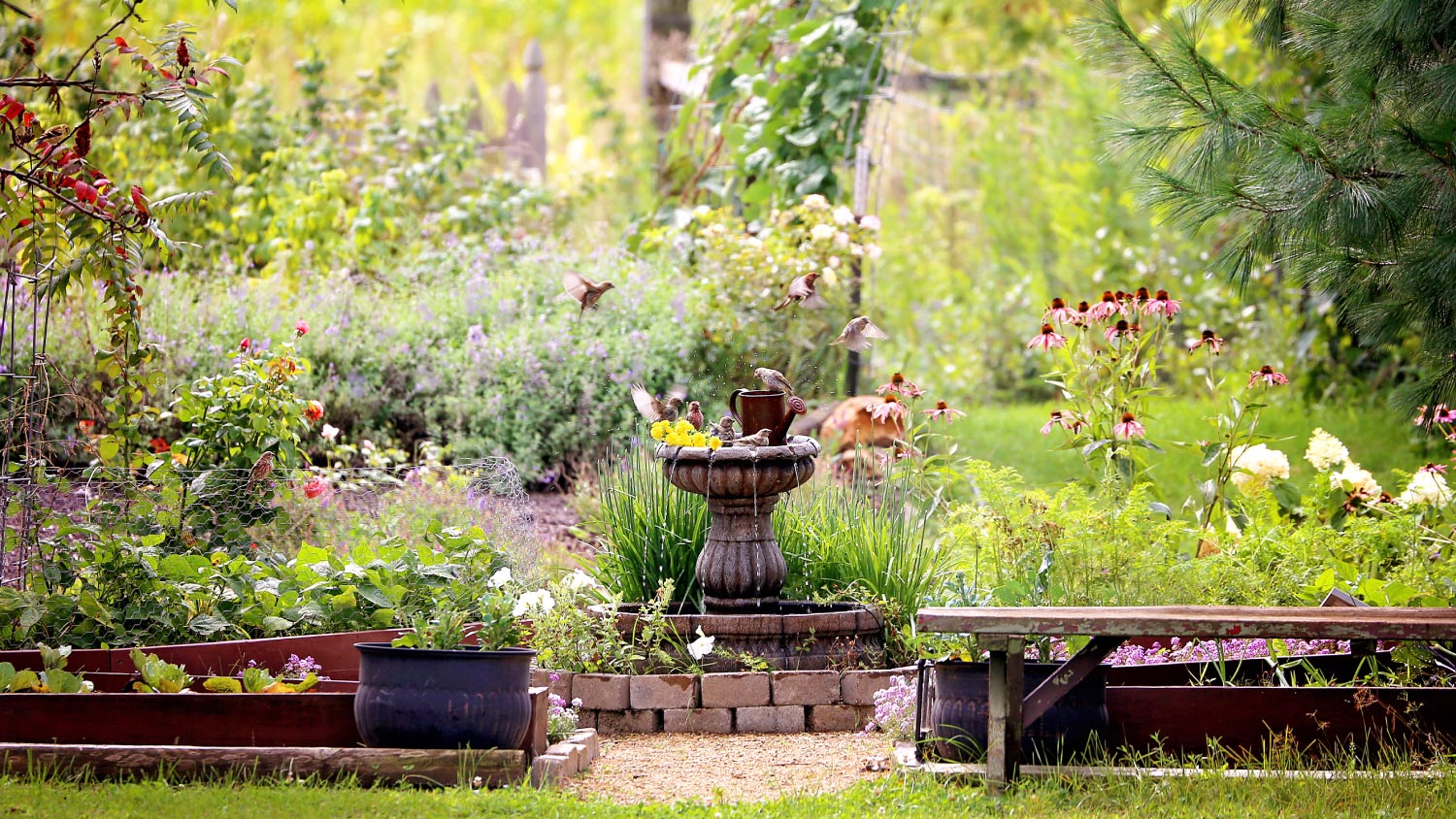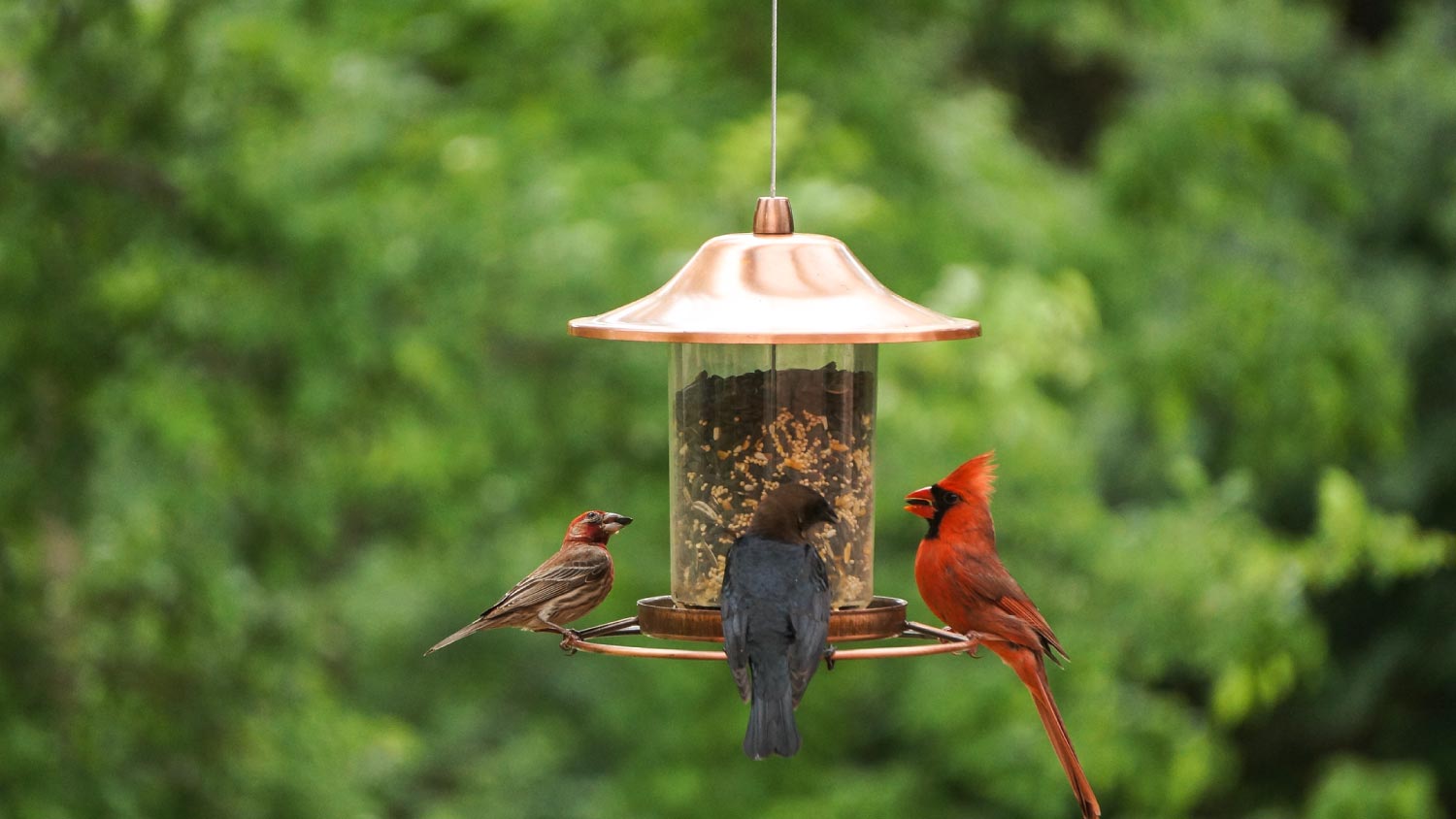
What are average sod installation prices? Learn how much sod costs in Atlanta, GA, based on factors like square footage, land prep, land condition, and more.
Create an outdoor haven for all creatures great and small


From tiny chipmunks to brightly colored butterflies and songbirds, wildlife has a way of making your outdoor space magical. Providing a safe space for these creatures helps support the natural ecosystems in your area, so the benefits stretch beyond the beautiful (or downright adorable) views. Here’s how to create a wildlife sanctuary in your backyard.
Planning is necessary to create a thriving wildlife habitat. When creating a landscape plan, consider the fact that you have both a horizontal area to work with (the expanse of your lot), as well as a vertical area that stretches from your soil to the treetops.
Different wildlife species live in each of these zones, so there are numerous opportunities to create potential habitats.
When creating a wildlife sanctuary in your backyard, research native plants that feed and attract pollinators such as the birds, butterflies, and bees around your home. In turn, they will pollinate your plants and those in the surrounding areas. It’s the perfect definition of a win-win.
Here’s a list of trees, shrubs, and nectar plants you’ll want in your habitat:
American beech (Fagus grandifolia)
American holly (Ilex opaca)
Azalea (Rhododendron spp.)
Balsam fir (Abies balsamea)
Bee balm (Monarda spp.)
Black cherry (Prunus serotina)
Black gum (Nyssa sylvatica)
Butterfly weed and other milkweeds (Asclepias spp.)
Common juniper (Juniperus communis)
Crabapple (Malus spp.)
Flowering dogwood (Cornus florida)
Hawthorns (Crataegus spp.)
Oaks (Quercus spp.)
Spicebush (Lindera benzoin)
Strawberry (Fragaria spp.)
Sumacs (Rhus spp.)
Trumpet honeysuckle (Lonicera sempervirens and related spp.)
Wax myrtle (Myrica cerifera)
Wild grape (Vitis spp.)
Zinnia (Zinnia spp.)
Food, water, and shelter can support individual animals, but areas for reproduction and raising young are necessary for carrying on the wildlife species.
According to the National Wildlife Federation, a wildlife habitat needs at least two places for mating, engaging in courtship behavior, and bearing and raising young.
These can include:
Nesting boxes
Mature trees
Meadows or prairies
Caves
Wetlands
Caterpillar host plants
Dead trees
Dense shrubs or thickets
Burrows
Ponds or water gardens
Water is as important to wildlife as it is to us, so it’s an essential part of any backyard wildlife habitat. Some animals will drink, while others will enjoy a refreshing bath. Certain insects, aquatic creatures, and amphibians also need water to reproduce. Birdbaths, fountains, and ponds are all great water features to consider.

Winter can be a trying time for the critters around your home. Keep them fed, sheltered, and loved by creating a winter wildlife habitat. Add feeders, birdhouses, and nesting boxes for your feathered friends. Plant evergreen shrubs to create a safe haven when other plants are bare. Also, leave out a fresh supply of water to keep everyone hydrated.
Using chemical pesticides can have devastating side effects on the wildlife in your area. Not only are they poisonous for whoever decides to graze or munch, but they can also contaminate soil and pollen—potentially killing pollinators. Rather than resorting to these harmful chemicals, choose physical barriers and organic pest control methods to prevent unwanted guests.
While we share our outdoor space with the critters in the area, conflicts of interest are often unavoidable—especially when trying to maintain a healthy lawn or grow a bountiful vegetable harvest. In any case, the best method of pest control is preventative maintenance.
If the local deer won’t stop ravaging your crops, build a barrier to keep them out. Keep your outside trash in sealed containers to keep out prying raccoon paws. Along with that, perform regular inspections of your home’s exterior to pinpoint gaps, rotting wood, and other rodent entry points.
Once you’ve put in the work, why not make it official? The National Wildlife Federation offers a Certified Wildlife Habitat program to officially recognize your property if it checks off all the boxes. Here are the requirements:
A minimum of three food sources (e.g., berries, nuts, fruits, nectar)
At least one water source
Two or more sources of cover (e.g., brush pile, wooded area, dense shrub or thicket, rock pile)
At least two places to raise young (e.g., birdhouse, small tree, host plants)
Your small application fee goes directly towards the NWF’s programs to support wildlife across America.
From average costs to expert advice, get all the answers you need to get your job done.

What are average sod installation prices? Learn how much sod costs in Atlanta, GA, based on factors like square footage, land prep, land condition, and more.

How much does hardscaping cost project by project? Check out our breakdown for every price tag you need to know, from outdoor fireplaces to patios.

Leveling your yard can help with drainage and prevent damage to your home. Learn the cost to level a yard in Atlanta, GA, and what factors can affect the price.

If you need to get rid of a bush, here’s how to handle this project in a few simple steps. Follow our step-by-step instructions.

Are you wondering, “Who can I hire to aerate my lawn?” Learn how to find and hire a local lawn service to get the job done and make your yard look healthy.

Boulders can make a statement in your landscape, from retaining walls to decorative features. This guide breaks down how much landscape boulders cost.